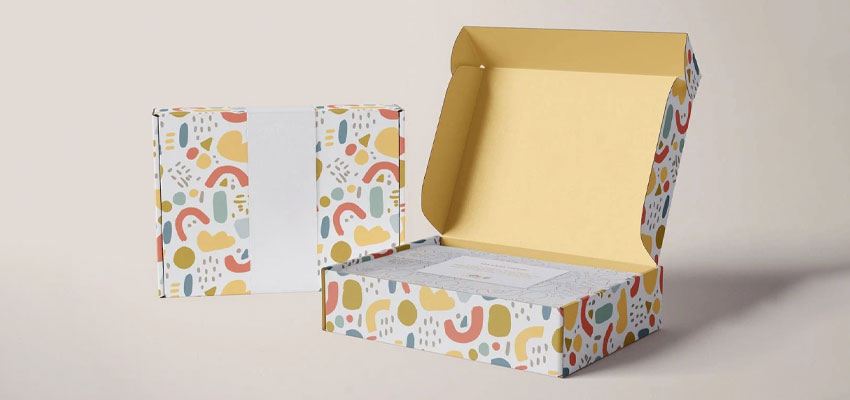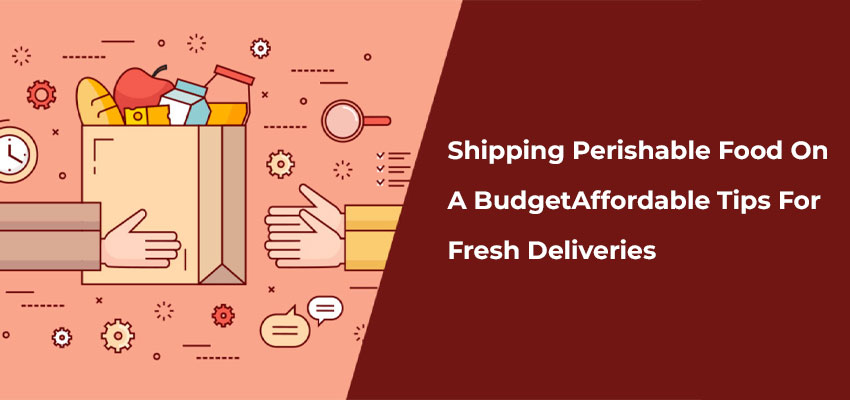
Shipping perishable food has become an integral part of today’s fast-paced world. Ensuring that your products reach your customers fresh and intact is non-negotiable. However, the challenge lies in doing so without getting out of the budget.This blog will guide you through the most affordable methods to ship perishable goods while keeping them safe, share packaging tips, and help you understand how to optimize the shipping process for long-term savings.
Why Shipping Perishables Matters
The stakes are high when shipping perishable food. Mishandling can result in spoiled goods, customer dissatisfaction, and financial losses.But the risks go beyond the immediate. Poor shipping practices can harm your brand's reputation, making it difficult to retain customers or attract new ones.For small businesses, finding the right balance between cost-efficiency and quality is essential.An optimized shipping process not only saves money but also builds trust, opening doors to expanding your customer base.
Cost-Effective Methods For Shipping Perishable Food
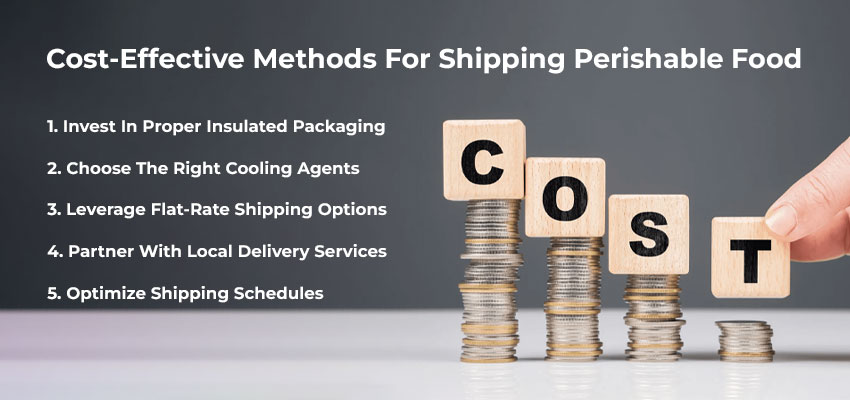
Different ways are explained below:
1. Invest In Proper Insulated Packaging
Using the right packaging can make or break your shipping process. Insulated packaging materials like foam coolers, thermal bubble wraps, or corrugated boxes with reflective liners maintain temperature without adding excessive weight.
Reusable Packaging
Investing in reusable insulation materials can reduce costs in the long term.
2. Choose The Right Cooling Agents
Cooling agents like gel packs and dry ice help maintain the desired temperature. Gel packs are ideal for short-distance shipments, while dry ice works better for long-distance or overnight shipping.
Combine Cooling Agents
For maximum efficiency, use a mix of gel packs and dry ice. This minimizes costs while ensuring items remain frozen during transit.
3. Leverage Flat-Rate Shipping Options
Carriers like USPS, UPS, and FedEx offer flat-rate shipping for small packages, which is particularly useful for lightweight insulated boxes. Flat rates ensure predictable costs and work well for small businesses.
4. Partner With Local Delivery Services
If your target market is nearby, partnering with local couriers can save money. Local delivery services often offer flexible pricing for bulk orders and provide faster turnaround times.
5. Optimize Shipping Schedules
The timing of shipments plays a crucial role in reducing costs. Avoid sending packages over the weekend or during holidays. This helps to minimize any delays in your deliveries.
Packaging Essentials For Perishable Goods
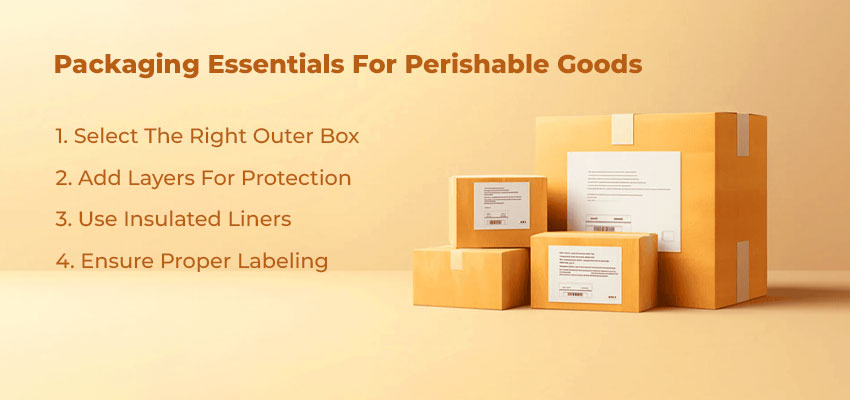
Packaging is the backbone of any perishable shipping process. It not only protects the product but also ensures it arrives fresh. Here’s how to perfect your packaging:
1. Select The Right Outer Box
Sturdy corrugated boxes are the best choice for outer packaging. These boxes are durable and, hence capable of withstanding rough handling.
2. Add Layers For Protection
To keep your product secure:
- Wrap individual items in leak-proof bags to prevent spills.
- Line the box with foam inserts or bubble wrap to stabilize the contents.
3. Use Insulated Liners
Insulated liners reflect heat and help maintain internal temperatures. They are lightweight and cost-effective, making them ideal for small businesses.
4. Ensure Proper Labeling
Clear labels such as “Perishable” and “Keep Refrigerated” inform handlers about the package’s sensitivity. In this way, proper labeling reduces the risk of mishandling.
Shipping For Different Food Types
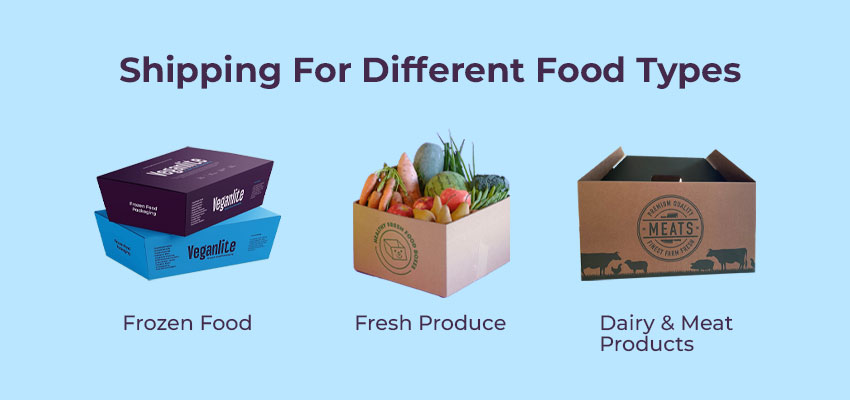
Different types of food require specialized shipping methods. Here’s a breakdown of best practices:
Frozen Food
- Use dry ice for long-distance shipping or gel packs for shorter durations.
- Ensure your packaging can maintain sub-zero temperatures for at least 24-48 hours.
Fresh Produce
- Ventilated boxes are essential to prevent spoilage.
- Include absorbent pads to control moisture levels.
Dairy And Meat Products
- Use insulated containers paired with gel packs.
- Always go for expedited or overnight shipping to minimize transit time.
Cutting Costs Without Compromising Quality
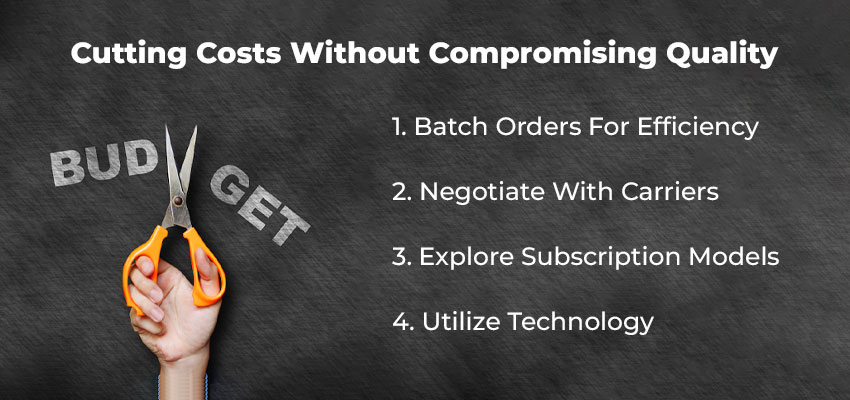
Shipping perishable food doesn’t have to drain your budget. Here are some tips to minimize your costs:
1. Batch Orders For Efficiency
Combine smaller orders into a single shipment. This reduces the cost per package, especially if you’re using flat-rate shipping.
2. Negotiate With Carriers
Shipping companies often provide discounts for businesses with regular or bulk shipments. Build long-term partnerships to secure better rates.
3. Explore Subscription Models
For businesses with recurring customers, offering subscription services can help streamline logistics. Regularly scheduled shipments allow you to plan routes and methods more effectively.
4. Utilize Technology
Shipping management software helps compare rates from different carriers, track shipments, and analyze costs. This insight enables better decision-making.
Eco-Friendly Packaging: A Win-Win Solution

Eco-conscious customers value sustainability, which makes it essential to adopt environmentally friendly practices. Here are some options:
Biodegradable Liners
Use materials that break down naturally, reducing your environmental footprint.
Reusable Cooling Solutions
Offer reusable gel packs or insulation that customers can return for discounts.
Minimalist Packaging
Reduce waste by using only necessary packaging materials.
Sustainability not only appeals to modern consumers but also positions your brand as environmentally responsible.
Challenges And Solutions In Perishable Food Shipping
Challenge No. 1: Maintaining Temperature For Long Durations
Solution
Test packaging under controlled conditions to ensure it performs as expected. Use devices to monitor temperature fluctuations.
Challenge No. 2: High Shipping Costs
Solution
Optimize packaging weight, compare carrier rates, and explore regional delivery options.
Challenge No. 3: Handling Regulations For Dry Ice
Solution
Familiarize yourself with carrier-specific guidelines. Dry ice requires special labeling and has quantity limits.
Read More: Everything You Need To Know About UPS Flat Rate Boxes For Smart Shipping
Emerging Trends In Perishable Food Shipping
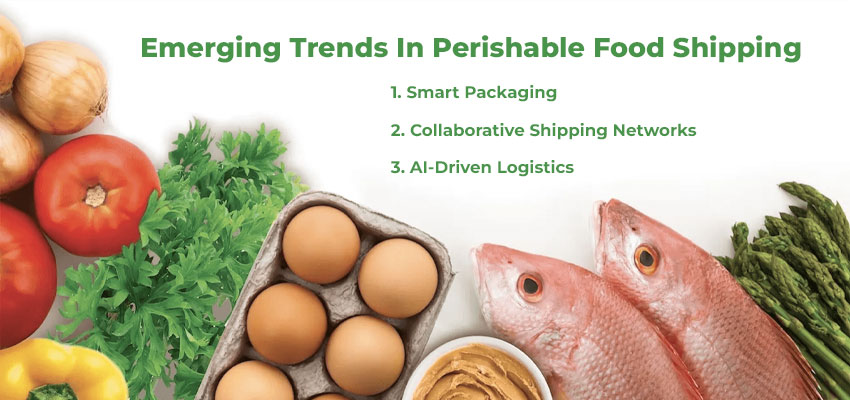
These are discussed below:
1. Smart Packaging
Temperature-sensitive packaging with built-in sensors is getting popular. These solutions monitor and report real-time conditions, ensuring product safety.
2. Collaborative Shipping Networks
Small businesses are partnering with others in their region to pool resources. Shared logistics reduce costs while maintaining quality.
3. AI-Driven Logistics
Artificial intelligence optimizes routes, predicts delays, and helps businesses choose the most efficient shipping options.
In The End:
Shipping perishable food may seem daunting, but with the right strategies, it can be both affordable and efficient. By using proper packaging, choosing the right carriers, and optimizing schedules, businesses can ensure their products arrive fresh and safe.At Your Box Packaging, we understand the unique challenges of shipping perishable goods. That’s why we offer innovative, eco-friendly packaging solutions designed to meet your business needs.Contact us via email today at sales@yourboxpackaging.com to learn more about our customized solutions. Let’s keep your perishable products fresh, safe, and on budget!


